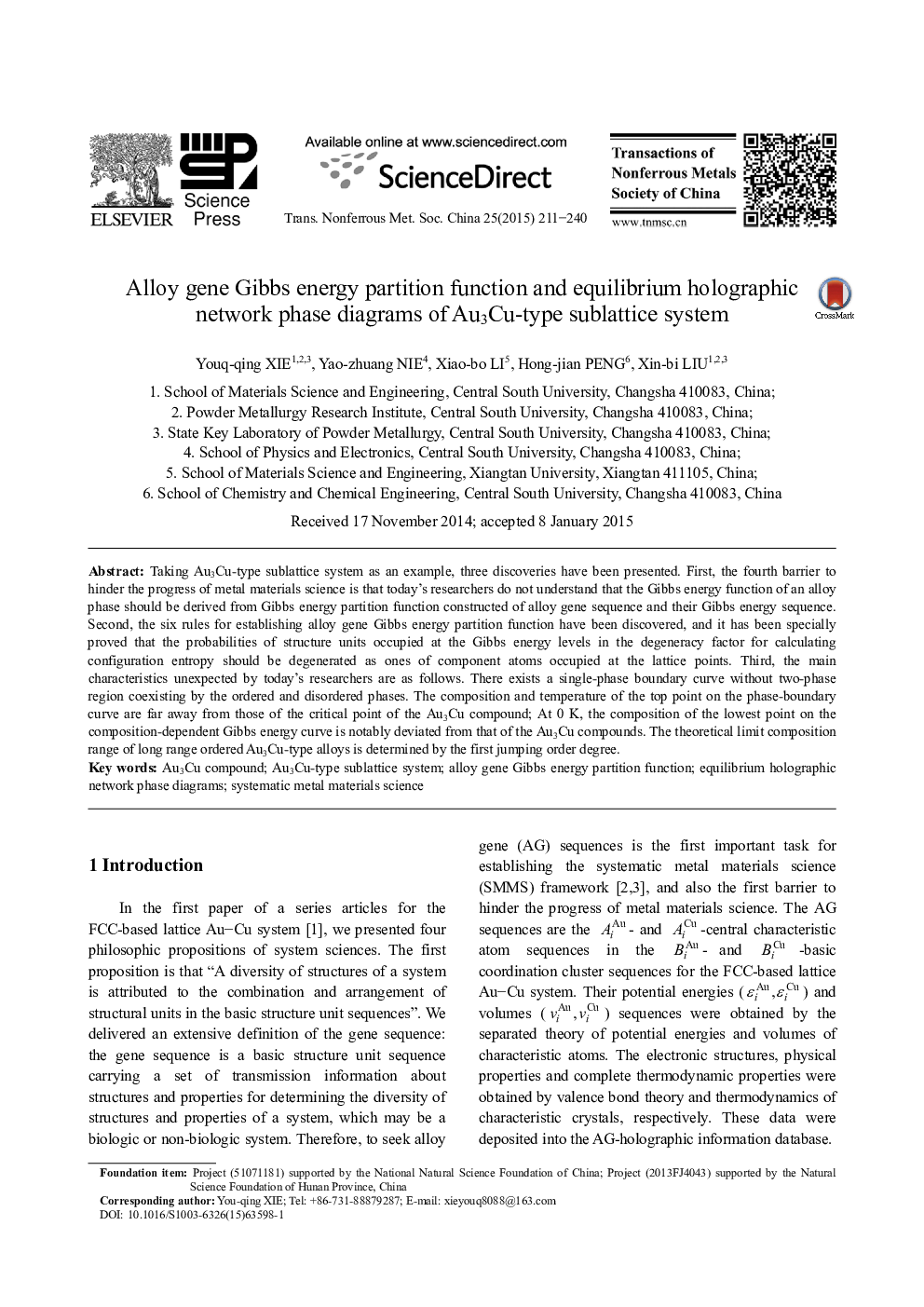| Article ID | Journal | Published Year | Pages | File Type |
|---|---|---|---|---|
| 1635878 | Transactions of Nonferrous Metals Society of China | 2015 | 30 Pages |
Abstract
Taking Au3Cu-type sublattice system as an example, three discoveries have been presented. First, the fourth barrier to hinder the progress of metal materials science is that today's researchers do not understand that the Gibbs energy function of an alloy phase should be derived from Gibbs energy partition function constructed of alloy gene sequence and their Gibbs energy sequence. Second, the six rules for establishing alloy gene Gibbs energy partition function have been discovered, and it has been specially proved that the probabilities of structure units occupied at the Gibbs energy levels in the degeneracy factor for calculating configuration entropy should be degenerated as ones of component atoms occupied at the lattice points. Third, the main characteristics unexpected by today's researchers are as follows. There exists a single-phase boundary curve without two-phase region coexisting by the ordered and disordered phases. The composition and temperature of the top point on the phase-boundary curve are far away from those of the critical point of the Au3Cu compound; At 0 K, the composition of the lowest point on the composition-dependent Gibbs energy curve is notably deviated from that of the Au3Cu compounds. The theoretical limit composition range of long range ordered Au3Cu-type alloys is determined by the first jumping order degree.
Related Topics
Physical Sciences and Engineering
Materials Science
Metals and Alloys
Authors
Youq-qing XIE, Yao-zhuang NIE, Xiao-bo LI, Hong-jian PENG, Xin-bi LIU,
